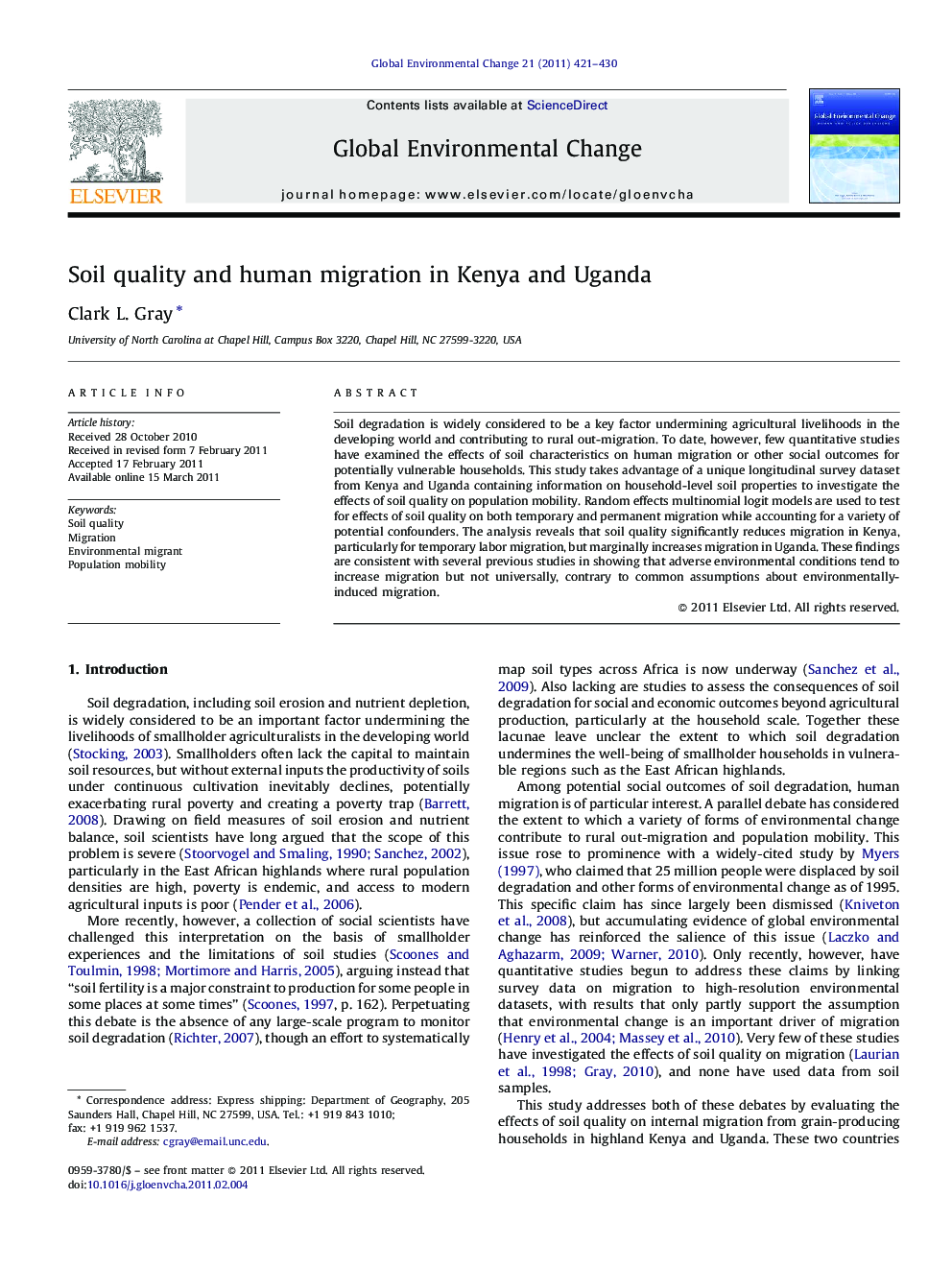| Article ID | Journal | Published Year | Pages | File Type |
|---|---|---|---|---|
| 1054927 | Global Environmental Change | 2011 | 10 Pages |
Soil degradation is widely considered to be a key factor undermining agricultural livelihoods in the developing world and contributing to rural out-migration. To date, however, few quantitative studies have examined the effects of soil characteristics on human migration or other social outcomes for potentially vulnerable households. This study takes advantage of a unique longitudinal survey dataset from Kenya and Uganda containing information on household-level soil properties to investigate the effects of soil quality on population mobility. Random effects multinomial logit models are used to test for effects of soil quality on both temporary and permanent migration while accounting for a variety of potential confounders. The analysis reveals that soil quality significantly reduces migration in Kenya, particularly for temporary labor migration, but marginally increases migration in Uganda. These findings are consistent with several previous studies in showing that adverse environmental conditions tend to increase migration but not universally, contrary to common assumptions about environmentally-induced migration.
► Few multivariate studies have investigated environmentally-induced human migration. ► A unique household survey provides information about soil quality and human migration in Kenya and Uganda. ► Multivariate analyses reveal that migration decreases with soil quality in Kenya and increases in Uganda. ► These results and those of other studies undermine common assumptions about environmentally-induced human migration.
